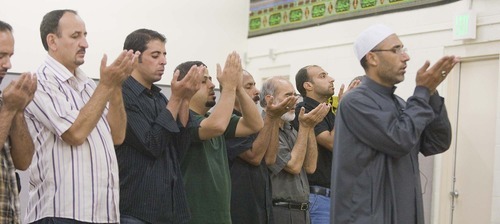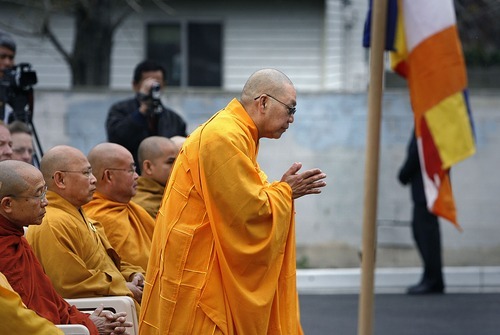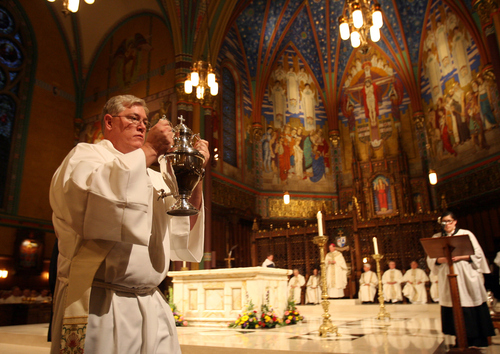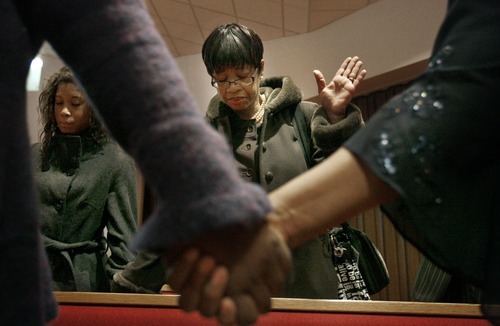This is an archived article that was published on sltrib.com in 2012, and information in the article may be outdated. It is provided only for personal research purposes and may not be reprinted.
The Catholic Church is shrinking. Mainline Protestant faiths are shrinking more. Mormons are growing fast. Muslims are growing faster.
Those are some of the major findings from the recently released U.S. Religion Census.
Collected from more than 150 participating bodies by the Association of Statisticians of American Religious Bodies, this once-a-decade report details which churches are growing, staying the same and declining. It reveals where various faiths are the strongest and where some might be moving. It is a county-based survey, allowing researchers to drill down to small units and give a glimpse of religion at its most communal level — in congregations. So what did it find? Lots.
For example, DID YOU KNOW?
• The nation's broad religious landscape hasn't changed all that much in the past decade. Baptists still rule the South's Bible Belt, Lutherans fill the Northern Plains, Methodists dot the Central Plains and Rust Belt, Mormons blanket the Mountain states, and Catholics prevail out West, in the Northeast and just about everywhere else.
• Southern Baptists continue to dominate conservative Christianity with 19,896,975 members, or 6.4 percent of the population, the highest number for evangelicals. It didn't lose members since 2000 but increased by a mere 0.1 percent. Evangelical and conservative Protestant groups grew by nearly 2 percent in the past decade and account for more than 14 percent of the nation's population.
• The United Methodist Church tops mainline Protestants, with 33,323 congregations and 9,948,221 members. That's down by 3.9 percent from 2000. Although widely dispersed, it has little presence in much of Alaska and in Utah beyond the Wasatch Front. Mainline Protestant faiths make up 7.3 percent of the population, but saw their numbers plunge by 12.8 percent in the decade.
• Most black churches still are settled in the South (though the figures are incomplete) and there's no telling whether their numbers are up or down because the Religion Census didn't count them in 2000. In 2010, researchers used mailing lists and online resources to gather data on 11 African-American religious bodies but had no earlier numbers on which to build growth or declining percentages.
• Catholics still color much of the map, especially along the coasts — out West, along the Gulf and in New England. Although the Catholic Church remains by far the nation's largest religious body, with 58,929,987 adherents and 19 percent of the population, it has dipped by 5 percent during the past decade, including a 10 percent dive in metro New York.
• Among Jewish groups, the Orthodox claim the highest followers with 947,070; one in five Jewish adherents lives in New York City. In 14 states and Washington, D.C., Judaism is the largest non-Christian group.
• The nation's Muslim population jumped by nearly 67 percent but even those figures, most researchers argue, are under-reported because this is a congregational study and many Muslims are not connected to a mosque. The largest group is in Illinois, but Muslims make up 5 percent of the population in a couple of Texas counties, among others, and is the largest non-Christian group in 20 states, including Wisconsin and Wyoming.
• There are a lot of Hindus in Colorado, but they represent the largest non-Christian group in Arizona and Delaware.
• Buddhists have about 1 million adherents in some 3,000 congregations, especially in California, Colorado and Florida, as well as in the Northwest and Northeast.
• Baha'is are the largest non-Christian group in one state: South Carolina.
• The census showed a 45 percent spurt for The Church of Jesus Christ of Latter-day Saints from 2000 to 2010. But because of a change in how LDS officials reported their numbers this time, that rate may be closer to 18 percent — still enough to rank as the nation's fastest-growing Christian church and the largest religious body in 115 U.S. counties.
And in Utah, DID YOU KNOW?
• Morgan County has the highest percent of Mormons at 88.9 percent, according to the census, followed by Utah County at 88.7. Grand County (31.1 percent) had the lowest Mormon percentage of total population. Tooele County saw the highest growth in its LDS population from 2000 to 2010, 50.5 percent, while Millard was the only county where Mormons declined — by 0.2 percent.
• After Mormons, the Catholic Church has the most members in the Beehive State at 160,125. That's significantly lower than the figure used by the Diocese of Salt Lake City, which estimates almost twice that many at 300,000, including many immigrants and migrant workers who often don't show up on parish records. They are the second-largest religious group in 20 counties.
• In San Juan County, Seventh-day Adventists are the second-largest group.
• As elsewhere, Utah's Southern Baptist Convention is the largest Protestant church, with 12,593 members in 79 congregations. Southern Baptists have staked out territory in Duchesne, while nondenominational Christian churches are the second largest in Emery, Millard and Sanpete counties and American Baptists rank second in Morgan County.
• Utah has three types of Buddhists — Mahayana, Theravada and Vajrayana — for a total of 8,602 adherents, according to the census, making them the largest non-Christian group. That's more Buddhists than Episcopalians (5,407), Methodists (6,156), Presbyterians (4,972) and Orthodox Christians (5,982).
• If you add the five branches of Lutheranism in Utah, that denomination is the largest mainline Protestant group, with 10,618 members in 38 congregations.
• Many people have heard about Salt Lake City's Calvary Baptist Church and historic Trinity African Methodist Episcopal Church, both mostly black churches, but what about the Church of God in Christ? The census notes Utah has nine Church of God congregations, which are part of the black Protestant or Pentecostal family.
• The state is home to 10 Hindu groups, with some 2,103 members. Seven of the groups are described as "Hindu Post Renaissance," which could refer to Hare Krishnas, a type of Hindu.
• The census estimates Utah's Muslim population at 4,998 in nine congregations, or mosques, while the state's Islamic leaders put the figure closer to 30,000. Clearly, many of those who follow Islam do not register with any mosque.
• As it did for the nation, the Religion Census counted four types of Jews: Orthodox, Conservative, Reform and Reconstructionist. In Utah, the largest group is Reform with 1,143 members, followed by Conservative with 317, Orthodox with 100 and Reconstructionist with 81.
• The state is home to 651 Mennonite Brethren. Who knew?
• Two traditionally liberal churches — the Unitarian Universalists and the United Church of Christ — have a combined membership of 2,020 in 14 congregations.
• There are 384 members in three Salvation Army congregations, and they are not all Christmas bell-ringers.
• The Seventh-day Adventists have 19 churches and 3,066 members.
And, the census says, Utah boasts two Zoroastrians, who follow a Persian religion founded in the 6th century B.C. It's unclear how the researchers found them.
Source: U.S. Religion Census 2010, compiled by the Association of Statisticians of American Religious Bodies.









